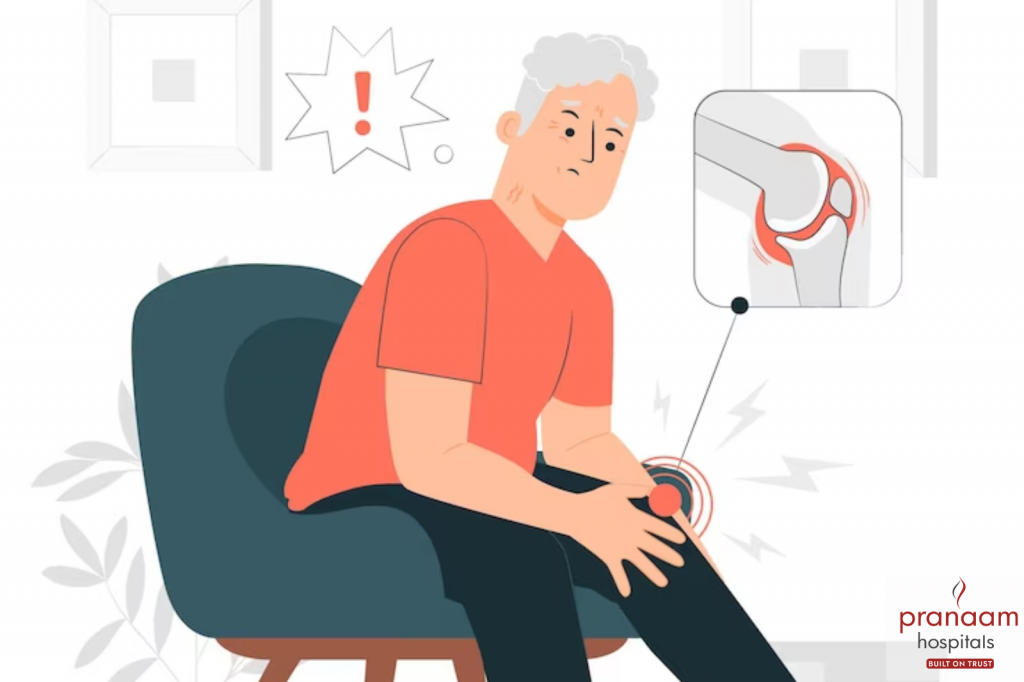People of all ages can experience the common complaint of knee pain. Many conditions, injuries, and underlying medical issues can be the cause. This is a thorough summary of knee pain that includes details about its causes, symptoms, diagnosis, and available treatments
Table of Contents
ToggleCauses of Knee Pain:
Injuries:
Sprains and Strains: Overstretching or tearing ligaments and tendons.
Fractures: Breaks in the bones of the knee (patella, femur, tibia).
Meniscus Tears: Meniscus tears involve the injury or damage to the cartilage that cushions the knee joint. This condition occurs when the wedge-shaped cartilage between the thigh and shin bones experiences tearing or disruption.
Anterior Cruciate Ligament (ACL) Tears: Common in athletes, particularly those in sports involving sudden stops and changes in direction.
Medical Conditions:Osteoarthritis: Degeneration of joint cartilage and the underlying bone.
Rheumatoid Arthritis: An autoimmune condition that affects the joints is called rheumatoid arthritis.
Gout: Gout is a condition characterized by the accumulation of uric acid crystals in joints, leading to inflammation and pain. This occurs when there is an excess of uric acid in the body.
Bursitis:Inflammation of the bursae, or fluid-filled sacs, surrounding the knee joint is known as bursitis.
Other Causes:
Tendonitis: Inflammation of the tendons.
Iliotibial Band Syndrome (ITBS): Inflammation of the tissue on the outer part of the knee.
Dislocation of the Kneecap (Patella): The patella slides out of place.
Infections: Infections in the knee joint.
Symptoms:
Pain:Location, intensity, and type of pain can vary depending on the underlying cause.
Sharp, stabbing, dull, or aching pain.
Swelling: Inflammation and fluid accumulation in and around the knee joint.
Stiffness: Difficulty in moving the knee joint, especially after periods of inactivity.
Redness and Warmth: Signs of inflammation and increased blood flow.
Diagnosis:
Medical History: Detailed discussion of symptoms, their onset, and any relevant activities or injuries.
Physical Examination: Inspection, palpation, and range of motion tests by a healthcare professional.
Imaging: X-rays, MRI, or CT scans to visualize the internal structures of the knee.
Laboratory Tests: Blood tests to identify inflammatory or infectious conditions.
Prevention:
Maintain a Healthy Weight: Reduces stress on the knee joints.
Exercise Regularly: Strengthening the muscles around the knee provides support.
Proper Technique and Equipment: Using proper techniques during physical activities and using appropriate equipment can prevent injuries.
Warm-up and Stretch:Proper warm-up and stretching before exercise or physical activity can prevent strains and injuries.
When to Seek Medical Attention:
Persistent or severe pain.
Swelling, redness, or warmth around the knee.
Difficulty in weight-bearing or movement.
Also Read: How do sports play a key role in children?
What is Arthritis?


